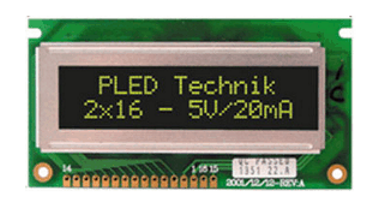polymer light emitting diode (PLED)
Polymer Light Emitting Diodes (PLEDs) are, like Light Emitting Polymers (LEPs) or Organic Light Emitting Diodes(OLEDs), colored polymer-based components for displays. PLEDs have a relatively simple structure in which the light-emitting and charge-transporting functions are combined in one layer.
Polymer LEDs differ in structure from light emitting polymers in that they have a light-reflecting cathode. Polymer technology differs from normal light emitting diodes(LEDs) in structure. PLEDs use undoped polymers sandwiched between the two electrodes, anode and cathode.
The advantages of polymer technology over light-emitting diodes include low power consumption, extreme flatness and flexibility of the display, and excellent luminous properties. PLEDs are used in simple displays of meters and monitoring devices, among other applications.

_en.png)
